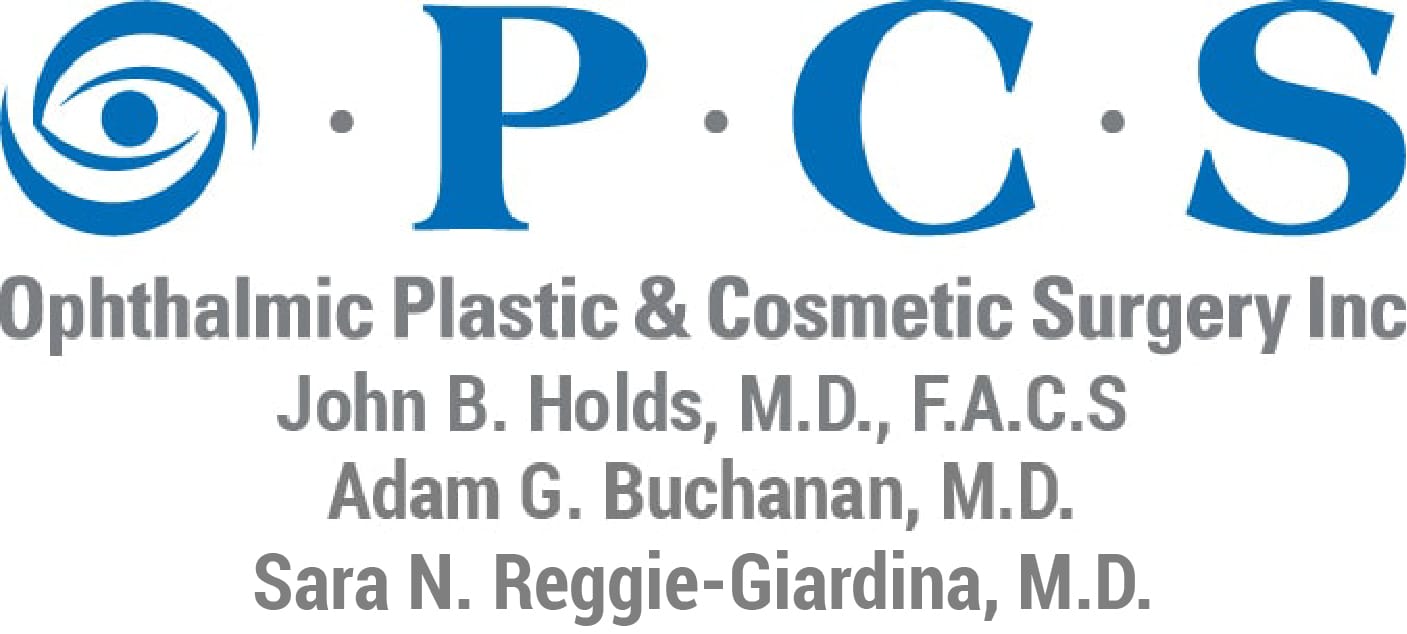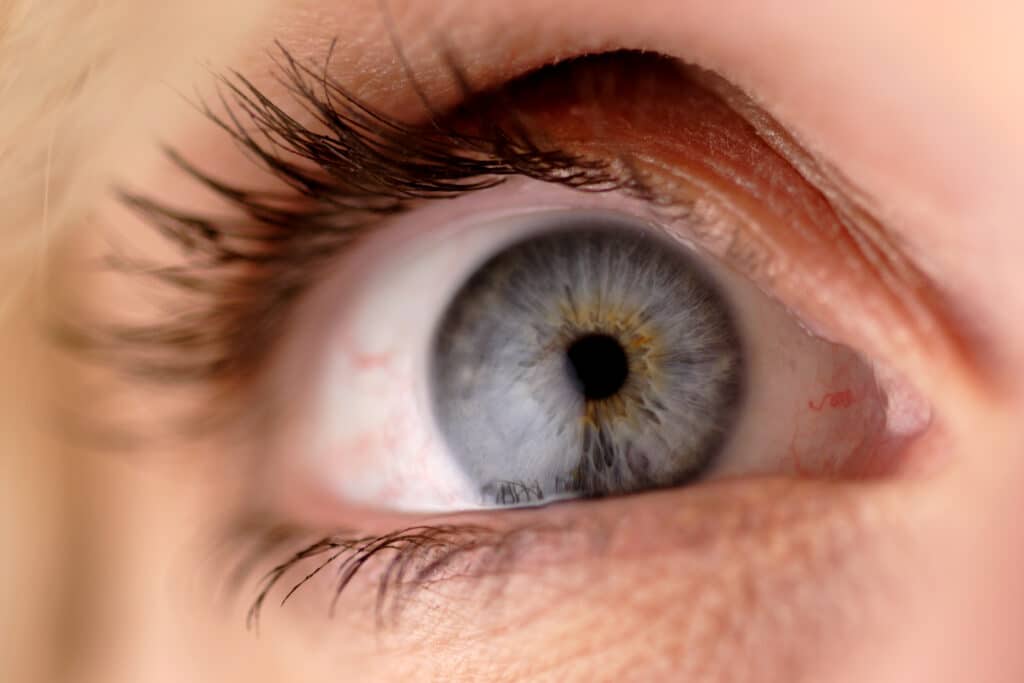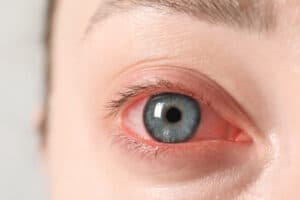Lacrimal Disease (Tearing disorders) Treatment in St. Louis, MO
What is Lacrimal Disease?
Your natural tears are important for the health of your eyes. They wash away dust, and they keep your eyes lubricated. People with tearing problems either experience excessive tearing or dryness, which can be accompanied by burning, irritation, and blurred vision.
Lacrimal Disease affects the tear ducts and can produce symptoms of dry eye or excessive tearing. For most people, the dry eye symptoms are a minor irritant treated medically with tear drops.
Problems with the tear drainage ducts commonly cause tearing. An obstruction in the tear duct, for example, needs to be removed surgically. A deformity of the eyelid may also cause tear drainage problems. If you suffer from a tearing problem including lacrimal disease, contact our St. Louis, MO practice for treatment.
What People Say About Us!
The entire staff was very courteous and made me feel very well…..I would recommend your office to all my friends.
Click here to read more reviews.
What Causes Tearing Problems?
Certain diseases like rosacea and rheumatoid arthritis can contribute to dryness, and menopause also contributes to dryness of the eyes. Ironically, dryness is sometimes the cause of excessive tears because the irritation causes the tear glands to reflexively produce excess tears. Allergies may also be a culprit with tearing complaints.
Tearing problems are also often caused by an obstruction in the tear duct which can develop as a result of aging, tumors, an injury, medications, or certain diseases. A malpositioned eyelid or tear duct opening can cause tearing complaints as well.
How long does a blocked tear duct last?
How long a tear duct remains blocked is dependent on several factors, including the cause of the blockage. For example, if the blockage occurs after an injury to the eye, the problem may resolve in a matter of weeks. If the blockage is structural, it may persist or recur until adequate treatment is performed. If you have symptoms of a blocked tear duct, it is beneficial to see an ophthalmologist sooner rather than later. A brief consultation and careful examination of your eye can help you understand the nature of the blockage and how to address it in the most conservative way possible.
What To Expect During Your Lacrimal Disease Consultation
When you arrive, you will need to provide a medical history, as we need to know about major illnesses and problems such as heart disease and hypertension. Prior surgery, especially facial surgery, is important. Medication history, including medications or supplements that thin the blood are vital to disclose. All over-the-counter pain/fever reducers (except Tylenol) and non-steroidal anti-inflammatory drugs (NSAID) are off limits for a week before eyelid surgery. Herbal medications such as ginkgo biloba and St. John’s Wort or high doses of fish oil, flax seed oil, or vitamin E must also be avoided.
Our team will ask you about the history of your tearing complaint and will examine you to determine if surgery is the right option for you. There may be other treatments that could correct your problem without surgery.
Surgery for Treating Lacrimal Disease
If you have a tear duct obstruction, it is opened during surgery and/or a new passage is created for your tears to drain properly. This kind of surgery is called DCR, which stands for dacryocystorhinostomy. If an eyelid deformity is the cause, this is corrected during your surgery, usually through tightening your eyelids. What happens in the surgery depends a great deal on what is preventing the tear ducts from functioning properly.
How do I prepare for Lacrimal Disease Treatment?
If you require surgery to enlarge a narrowed tear duct, you will be advised to avoid certain medications and supplements for a short time. Due to blood-thinning effects, non-steroidal anti-inflammatory drugs like ibuprofen should be avoided. Aspirin should also be avoided for one week prior to the procedure. If necessary, patients may take Tylenol or other acetaminophen products. Herbal supplements including ginkgo biloba and St. John’s Wort, higher doses of fish oil, flaxseed oil, and vitamin E should also be avoided.
Recovery After Lacrimal Disease Procedure
Recovery from lacrimal disease is related to the treatment that is necessary to improve tear production and drainage. If a patient has an infection that is treated with medication or eye drops, there is no recovery; tearing simply improves as the infection resolves. Patients who undergo surgery to correct a structural issue underlying lacrimal disease can expect some degree of post-operative bruising and swelling. These side effects may last approximately 10 days. Though they improve significantly within the first week, patients may want to arrange to have 2 weeks off work and other obligations.
What should I expect from my results?
Are There risks of Lacrimal Disease Surgery?
Can Lacrimal Disease go away on its own?
Yes. Some cases of lacrimal disease do resolve spontaneously over time. Rather than take a wait-and-see approach, however, it is wise to schedule a consultation with an ophthalmologist. This enables you to identify the origin of your blockage and ways to manage your tear production. This may be possible to do without surgery.
How do you stop the corner of your eyes from itching?
Itching may be a sign of lacrimal disease, an infected tear duct, pink eye, or other conditions. In order to stop this symptom, it is necessary to find its cause and treat it appropriately. In the short term, itching may be remedied by applying a warm compress to the eyes or using eye drops to manage dry eye. If there is any sign of infection, treatment should be sought right away, as the use of remedies could worsen the problem.
Can Lacrimal Disease Affect Both Eyes Simultaneously?
Yes, lacrimal disease can affect both eyes at the same time. The lacrimal system, responsible for tear production and drainage, can develop issues in one or both eyes.
Bilateral involvement may point to a systemic condition or an underlying disease affecting the entire body. Common causes of bilateral lacrimal disease include:
- Inflammation
- Infection
- Systemic diseases like sarcoidosis and Sjögren’s syndrome
How Does Chronic Lacrimal Disease Impact Vision?
Chronic lacrimal disease can have a significant impact on one’s vision. The effects include persistent tearing and discharge, which can blur vision and cause discomfort.
In severe cases, chronic inflammation and infection can lead to scarring or damage to the cornea. These issues affect visual acuity. Constantly needing to wipe away tears can also cause irritation and redness, further affecting eye health.
Over time, if left untreated, chronic lacrimal disease can lead to more severe complications. This includes recurrent infections and potential vision loss.
.
Can Lifestyle Changes Help Manage Lacrimal Disease Symptoms?
Managing lacrimal disease symptoms through lifestyle changes can reduce discomfort and prevent exacerbation. Here are some recommended adjustments:
- Eye Hygiene: Regularly clean your eyelids and eyelashes to prevent blockages and infections.
- Avoid Irritants: Limit exposure to smoke, dust, and allergens that can worsen symptoms.
- Hydration: Stay well-hydrated to support tear production.
- Diet: Incorporate omega-3 fatty acids and other nutrients that promote eye health.
- Regular Eye Exams: Schedule regular check-ups with an ophthalmologist.
- Warm Compresses: Apply warm compresses to open blocked tear ducts and relieve discomfort.
What Is the Success Rate of Dacryocystorhinostomy (DCR) Surgery?
Dacryocystorhinostomy (DCR) surgery boasts a high success rate. Some research shows a success rate of up to 90-95%.
The success of DCR surgery depends on factors such as:
- The patient’s overall health
- The severity of the obstruction
- Adherence to postoperative care instructions
Are There Any Special Considerations for Elderly Patients With Lacrimal Disease?
Elderly patients with lacrimal disease need special considerations due to age-related changes and potential comorbidities. Factors to consider include:
- Systemic Health: Physicians must assess and help patients manage underlying health conditions. For example, diabetes and hypertension can affect eye health.
- Medication Management: Physicians must also evaluate the patient’s current medications. Some may contribute to dry eyes or other symptoms.
- Surgical Risk: Patients should carefully consider the risks and benefits of surgical interventions. They should take into account their general health and recovery capacity.
- Postoperative Care: Physicians must provide comprehensive postoperative care and support. This will ensure proper healing and reduce complications.
- Regular Monitoring: Patients must attend frequent follow-up appointments. These allow physicians to observe the condition and adjust treatment plans as necessary.
Why Choose Ophthalmic Plastic & Cosmetic Surgery Inc.?
Choose Ophthalmic Plastic & Cosmetic Surgery Inc. for unparalleled eye care in St. Louis, MO. Our team includes four highly skilled and trained surgeons dedicated to your eye health.
With dozens of five-star reviews from satisfied patients, we have a proven record of excellence. Work with us to experience superior treatment and the expertise you deserve for lacrimal disease and other eye conditions.
Schedule a Consultation
Call our office today at (314) 567-3567 for a consultation to find out more about Lacrimal Disease and the surgeries to correct it. Ophthalmic Plastic & Cosmetic Surgery, Inc. serves St. Louis, St. Peters, and surrounding areas in Missouri.





